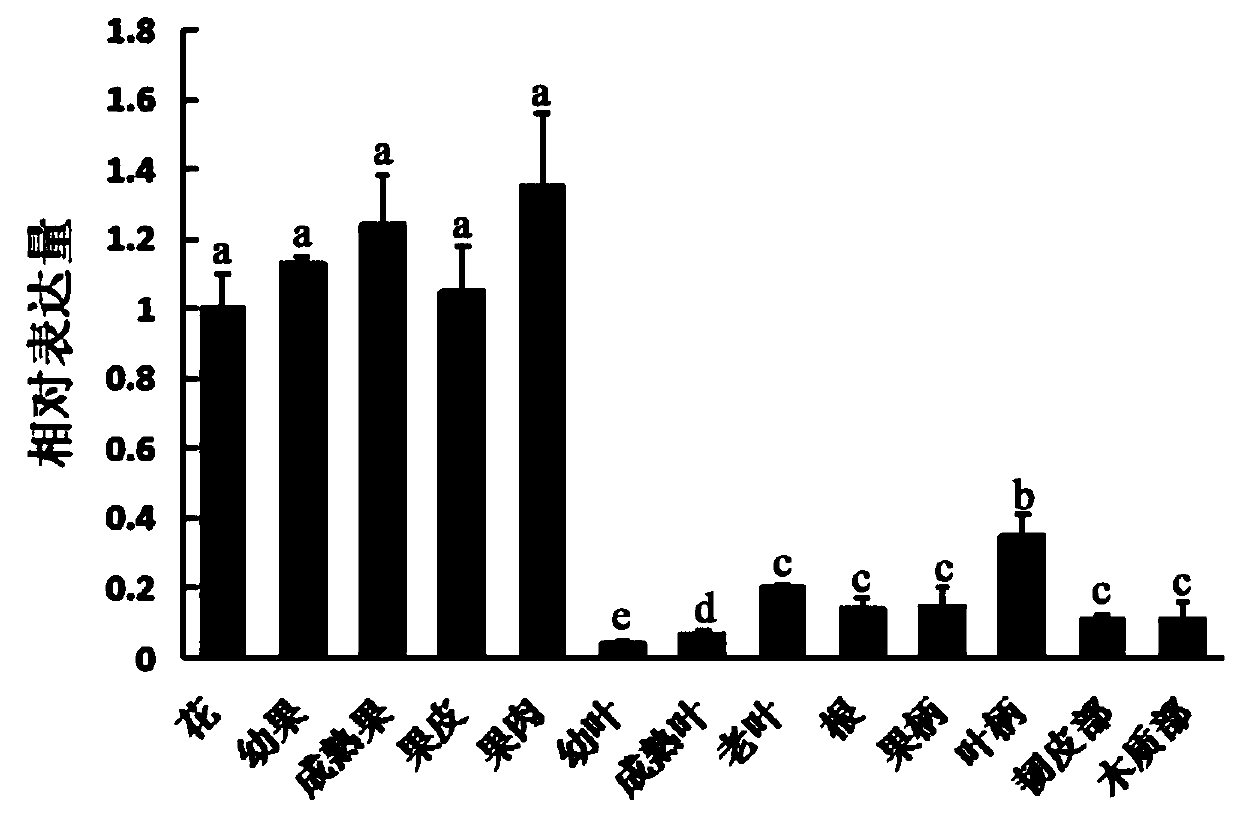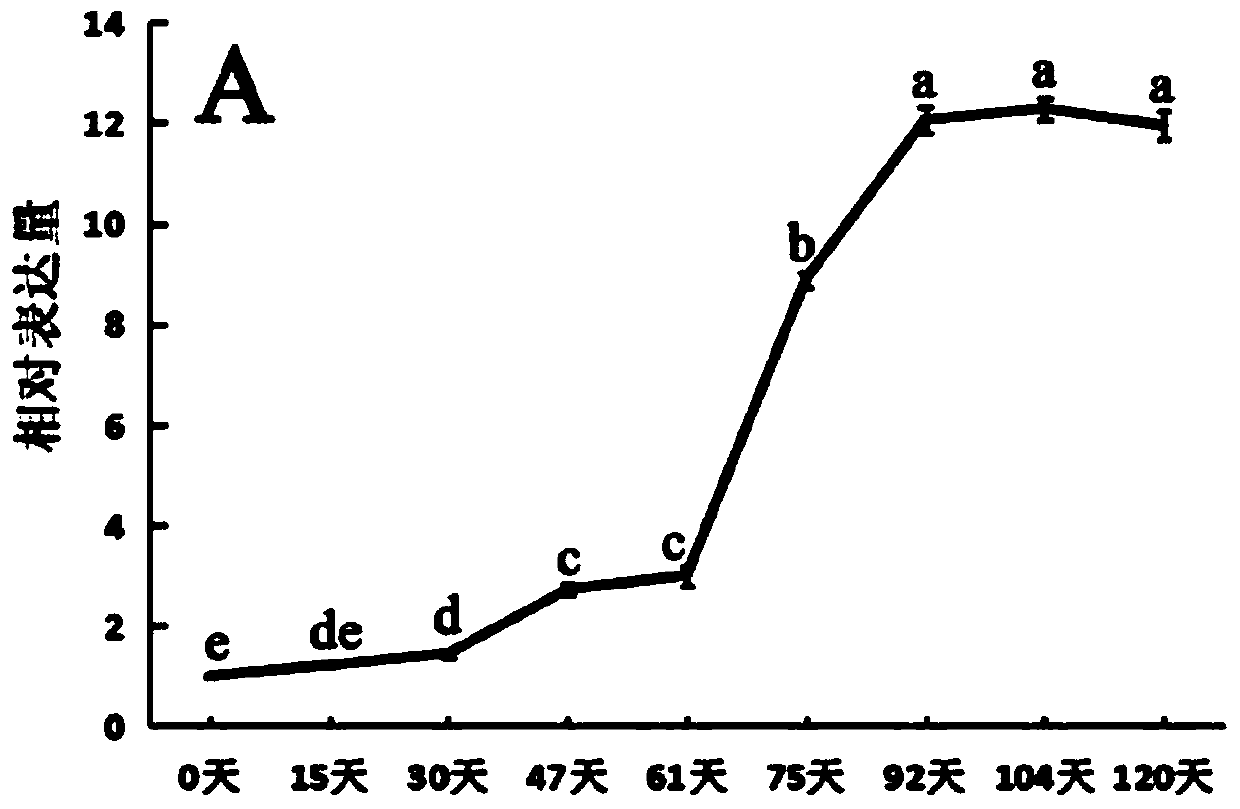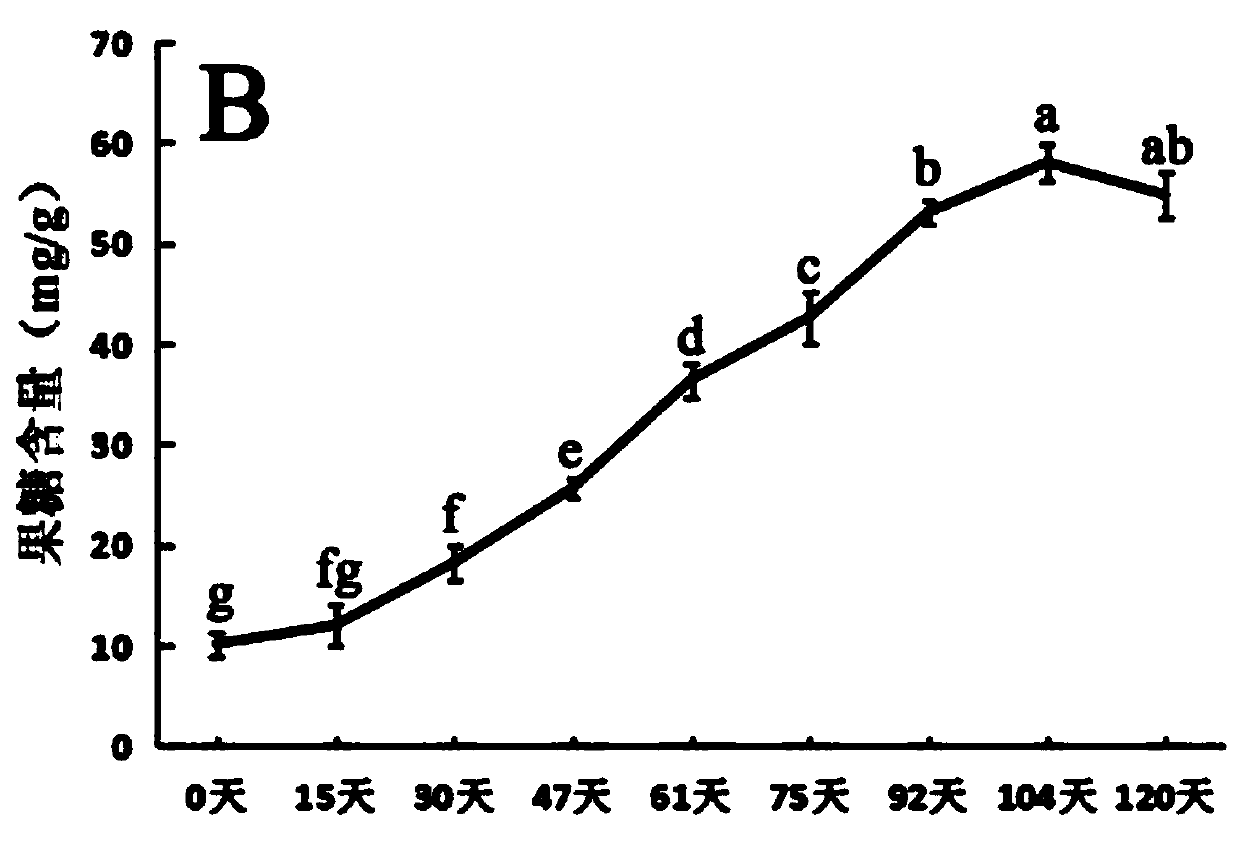Apple fruit hexose transporter gene MdHT2.2 and application thereof
A transporter and transgenic plant technology, applied in the application field of apple fruit hexose transporter gene MdHT2.2, can solve the problem of unknown sugar metabolism content regulation and achieve the effect of increasing sugar content
- Summary
- Abstract
- Description
- Claims
- Application Information
AI Technical Summary
Problems solved by technology
Method used
Image
Examples
Embodiment 1
[0040] Example 1, analyzing the gene expression pattern of the apple fruit hexose transporter gene MdHT2.2 of the present invention:
[0041] The materials were selected from "Gala" apples in the North Campus North Campus of Northwest Agriculture and Forestry University, and the rootstock was Xinjiang wild apples (M.sieversii). The planting density is 3×4m, running north-south. Throughout the growth process, regularly spray fungicides and insecticides to control diseases and insect pests. Flowers, young fruits, mature fruits, pericarp, pulp, young leaves, mature leaves, old leaves, roots, fruit stalks, petioles, phloem, and xylem were collected as samples, and all samples were quickly frozen in liquid nitrogen immediately after harvesting, and the total The RNA was reverse transcribed, and the resulting first-strand cDNA was used to amplify the apple fruit hexose transporter gene MdHT2.2.
[0042] Wherein, utilize CTAB method when extracting total RNA, (CTAB extraction buffe...
Embodiment 2
[0046] Example 2, the gene expression of apple fruit hexose transporter gene MdHT2.2 of the present invention and its relationship with fruit sugar accumulation
[0047] 1. qPCR analysis of apple fruit hexose transporter gene MdHT2.2 during apple fruit development
[0048] The materials were taken from the Northwest A&F University North Campus Garden "Gala" apple fruit samples were taken 16, 34, 55, 75, 98, 122 days after flowering, and between 3:00 and 4:00 in the afternoon. When sampling, in all 15 trees, 6 fruits on 3 trees were used as a repetition, a total of 5 repetitions. Weigh quickly after sampling, cut into pieces after removing the nucleus, and freeze immediately. In order to compare the expression patterns of related genes in source and sink tissues, shoot tips and mature leaves were collected at 34 days after flowering. All samples were stored in ultra-low temperature freezers.
[0049] Table 1 primers used in the present invention
[0050]
[0051] 2. Chan...
Embodiment 3
[0057] Embodiment 3, the cloning of apple fruit MdHT2.2 gene
[0058] Using "Gala" fruit as the test material, the total RNA of the pulp was extracted and reverse-transcribed, and the obtained first-strand cDNA was used to amplify the MdHT2.2 gene. Extraction of total RNA from pulp, cDNA synthesis and primer design were the same as
[0059] Example 1.
[0060] Amplification primers are the same as in Table 1. The 50 μl reaction system includes: 10 μl 5×Phusion HF for GC Buffer (NEB Company), 1 μl 10 mM dNTPs, 2.5 μl forward primer, 2.5 μl reverse primer, 0.5 μl Phusion high-fidelity DNA polymerase (NEB company), 1 μl cDNA. The PCR reaction program was: pre-denaturation at 98°C for 30s; denaturation at 98°C for 10s, annealing at 65°C for 30s, extension at 72°C for 30s, 35 cycles; and extension at 72°C for 10min after the cycle was completed. After the PCR product was electrophoresed on a 1% agarose gel, the Figure 6 The indicated bands of interest were recovered with a gel...
PUM
 Login to View More
Login to View More Abstract
Description
Claims
Application Information
 Login to View More
Login to View More - R&D
- Intellectual Property
- Life Sciences
- Materials
- Tech Scout
- Unparalleled Data Quality
- Higher Quality Content
- 60% Fewer Hallucinations
Browse by: Latest US Patents, China's latest patents, Technical Efficacy Thesaurus, Application Domain, Technology Topic, Popular Technical Reports.
© 2025 PatSnap. All rights reserved.Legal|Privacy policy|Modern Slavery Act Transparency Statement|Sitemap|About US| Contact US: help@patsnap.com



